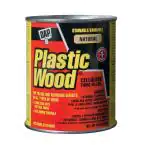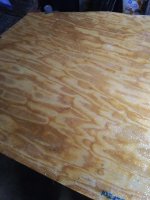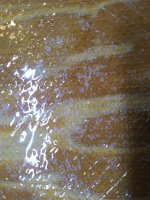From personnel experience I've had marine grade rot just as quick a cabinet grade plywood. I've found that you need to wet out your replacement boards completely especially end grains. before you lay it up.Oh, yeah, I'm definitely using marine ply for all the stringers (unless sourcing, wait times, or some other unseen issue gets in the way. But that's unlikely, as we already have a few sheets of 3/4" and 1/2" already now).
When I was saying "debating using a 2x4" I was just saying that the current dimensions are around 2" wide by 4" tall, like an actual 2x4 was used, for at least 4 out of my 6 stringers. So, I'm not sure if I should still follow that schematic and keep them at the same dimensions 2"wide and 4" tall (using marine ply of course)... Or, if I should just make them as tall as I can all the way up to the sole/deck in every position possible, except for the fish boxes?
(My fish boxes are on each side of the deck and directly above the two outside stringers. Those are 2 of the 6 stringers that are 2x4 size, and then the two inner stringers with engine beds on top of them are also 2x4 size).
It's weird because only TWO of the stringers are actually up to deck height. Looking at a cross section of my boat, the 6 stringers are setup like this:
| |
| |
| | | | | |
I just wasn't sure if there was some unknown design reason for this being setup that way by the factory? Or, it was just done to save time and costs while still being "boat-able" for the average user and I am just overthinking it/second guessing the design importance for no reason, lol.

- Shop
-
Main Menu Find The Right Fit
-
-
Slide Anchor Box Anchors Shop Now

-
Back Fishing
-
View All
- Fishing Rods
- Fishing Reels
- Fishing Rod & Reel Combos
- Fishing Tools & Tackle Boxes
- Fishing Line
- Fly Fishing
- Fishing Bait & Fishing Lures
- Fishing Rod Holders & Storage Racks
- Fish Finders, Sounders & Sonar
- Trolling Motors
- Fishing Nets
- Fishing Downriggers & Acessories
- Fishing Outriggers & Acessories
- Fishing Kayaks
- Fish Cleaning Tables
-
-
Minn Kota Riptide Terrova 80 Trolling Motor w/i-Pilot & Bluetooth Shop Trolling Motors

-
SportsStuff Great Big Marble Shop Tubes

-
Big Jon Honda 5hp Outboard Shop Outboards

-
Lexington High Back Reclining Helm Seat Shop Helm Seats

-
Kuuma Stow n Go BBQ Shop Now

-
Slide Anchor Box Anchors Shop Now

-
Back Electrical
-
View All
- Boat Wiring & Cable
- Marine Batteries & Accessories
- Marine DC Power Plugs & Sockets
- Marine Electrical Meters
- Boat Lights
- Marine Electrical Panels & Circuit Breakers
- Power Packs & Jump Starters
- Marine Solar Power Accessories
- Marine Electrical Terminals
- Marine Fuse Blocks & Terminal Blocks
- Marine Switches
- Shore Power & AC Distribution
-
-
ProMariner ProNautic Battery Charger Shop Marine Battery Chargers

-
Lowrance Hook2-4 GPS Bullet Skimmer Shop GPS Chartplotter and Fish Finder Combo

-
Boston Whaler, 1972-1993, Boat Gel Coat - Spectrum Color Find your boats Gel Coat Match

-
Rule 1500 GPH Automatic Bilge Pump Shop Bilge Pumps

-
Back Trailering
-
SeaSense Trailer Winch Shop Trailer Winches

-
Seadog Stainless Steel Cup Holder Shop Drink Holders

-
Slide Anchor Box Anchors Shop Now

-
- Boats for Sale
- Community
-











